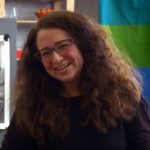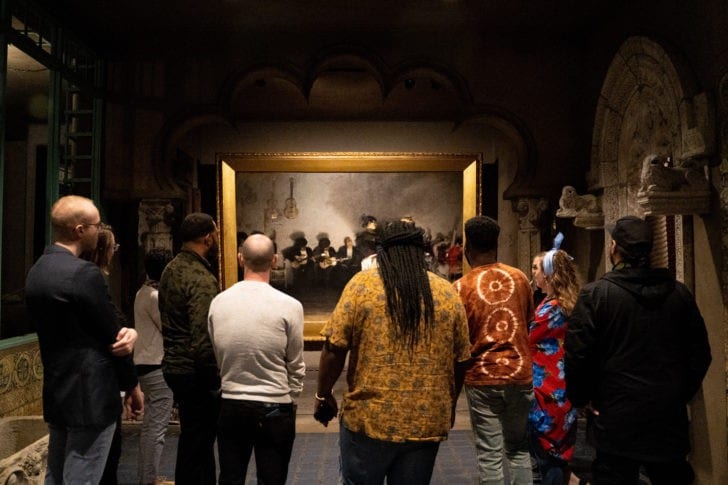
The Isabella Stewart Gardner Museum, established by Boston’s only art collector with a household name (yes, if anyone reading this happens to be a Boston art collector, that is a thrown gauntlet!) is inclined by its charter to look backward in time and inward rather than outward or at the present moment. Gardner has strapped the museum with a unique and interesting problem: No new artwork can be added to her collection. So the biggest change to the collection since the museum’s founding is arguably an infamous 1990 art heist, when thieves posing as police walked out the door with 13 pieces of art. The absences left behind by these missing works are the most contemporary images contained within the museum’s walls.
But in addition to the expectation that the museum staff “bring to life and preserve the rich historic collection,” the Gardner’s mission also requires it to stay relevant, and to make connections with the world and a Boston of the present moment.
Since 2014, its mission has officially included a requirement that it “engage local and global audiences” in such a way that “deeply personal and communal adventures unfold.” The museum has answered this call since the early 1990s through a robust international artist residency, which has brought high-profile contemporary artists from around the world to engage with the museum’s collection and themes. And since opening a new wing in 2012, it’s also been doing this through its performance series; through the Polly Thayer Starr Visiting Artist and Choreographer in Residence programs; and through more casual programming like the Living Room project, initiated by Artist-in-Residence Lee Mingwei, which has brought 400+ Boston residents in to share their own personal (and often quite weird…) collections alongside Gardner’s.
But the Neighborhood Salon Luminary project is a bit different.
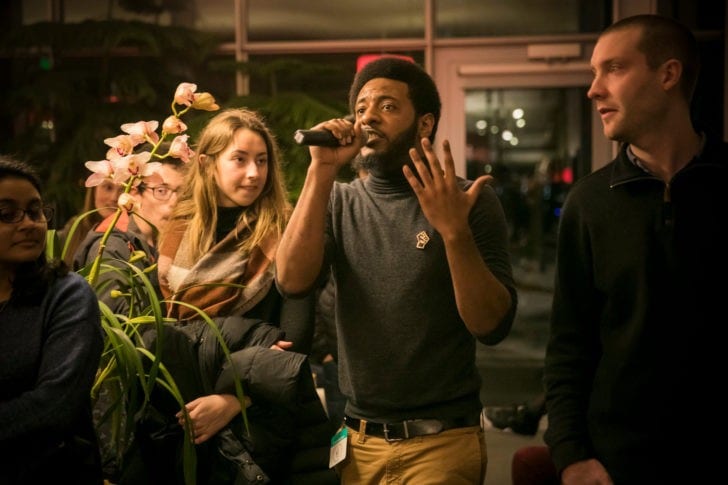
When she came on board in 2016, after several years doing community-engaged arts and education work in New York, Wisconsin, Cuba, and Brazil, Rhea Vedro, the museum’s director of community engagement, was tasked with developing something along the lines of a community advisory board for the museum. After a deep refresh of the strategic plan for her department, Vedro, a relative newcomer to Boston, decided to reach out to an artist already doing some programming work with the Gardner: acclaimed singer and Boston native Shea Rose. She was hoping to create something a bit more dynamic than a traditional advisory board—something polyvocal and multidirectional—rather than simply an input channel to the museum. Backed by the Barr Foundation, the Polly Thayer Starr Charitable Trust, the Massachusetts Cultural Council and several out-of-state funding bodies, the two put their heads together and came up with an idea that, in keeping with Isabella Stewart Gardner’s style, was salon-inspired.
“We were thinking about organic, fun ways that community voices infuse organizations and spaces,” Vedro recalls, “and being an artist myself, that meant putting together—with a collaborator, who was deeply entrenched in the local community here—an artist’s circle, which could become a space, using the museum itself as a springboard, for creatives to come together and build community and share about their work. Also, they become the go-to program people that we could go to and say ‘help us think about opportunities that you would be interested in getting involved with around this theme or that theme’ while also allowing for the organic nature of what happens when you put a bunch of artists together and give them chances to share their work.”
She describes the program as going a bit deeper than some of the public engagement work that preceded it. “The Neighborhood Salon Luminaries are a deeper touch and there is a much heavier investment in mutual reciprocity between the museum and these artists. We spend a lot of time together and they become our paid collaborators.” Not just during their cohort year, but for the longer term, it looks like: One of last year’s luminaries has come on to help run the program this year, and others are still hosting events and giving talks two years after their terms have ended.
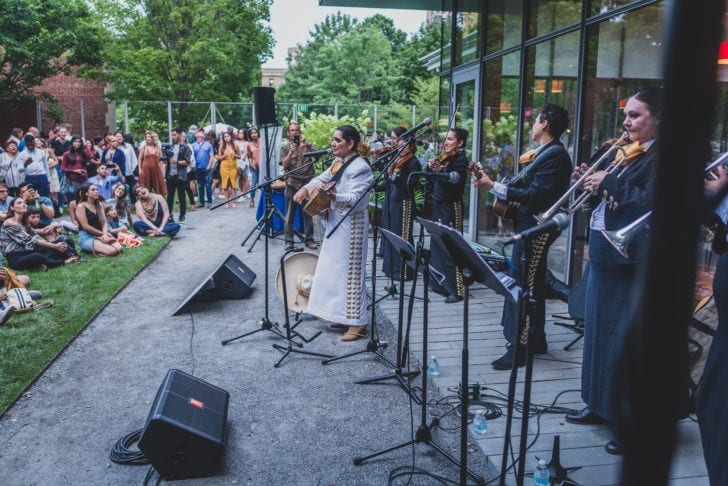
Structurally, the luminary program is fairly simple: Artists have an initial group meeting at the beginning of their cohort year, and then meet quarterly to share their work with one another inspiring each other and thinking across disciplines, identities, and subcultures as they find individual or collaborative ways to get involved in public programming aligned with the museum’s planned exhibition themes over a period of 12-18 months.
Also, the individual experience of the artist has been carefully thought through.
Veronica Robles, leader of Boston’s first all-female Mariachi band and co-founder of the Veronica Robles Cultural Center in East Boston, which promotes Latin American art and culture in Boston, was completely surprised to find herself among the 2020 Neighborhood Salon Luminaries. She described learning about being chosen as an extremely affirming experience (“I felt honored and accomplished”) and the initial gathering of the cohort as deeply nurturing—an experience that is quite rare for artists. “After our welcome meeting I felt completely relaxed, pampered, and comforted,” Robles confesses.
It is nuance like this—both the unexpectedness of being invited into the museum’s fold that Robles describes, and the museum’s efforts to make the honor really feel like an honor and not a duty or transaction—that Vedro is after.
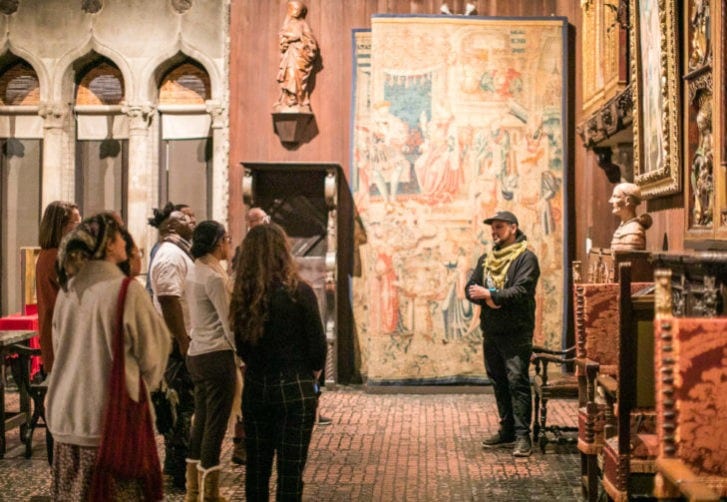
Artists (and others) are chosen for the role based on two things at this point: A strong piece of the picture are recommendations from those who have been luminaries before them. And then there is “a rubric” that Vedro and Rose developed together. “When we were thinking about a rubric for deciding on who to invite,” explains Vedro, “we were thinking about medium, so thinking across mediums, as well as about some kind of gender balance, as well as looking at neighborhoods that people were based out of, as well as looking at racial demographics as people self-identified, and looking at where people were in their careers.” This neatly echoes the values laid out in the museum’s recently released strategic plan and its audience development goals, which Vedro describes as focused on “local audiences—hyperlocal—people who can walk over to the museum within 30 minutes; we’re also thinking about younger audiences—those 34 and under—and about racially diverse audiences.”
In its first four years of existence, the Neighborhood Salon Luminary cohorts—groups that have ranged from eight to 10 in number, are, until this year, majority female-identified and majority POC. This year, the group is a little bit more dominated by male-identified members than in previous years but also includes one openly nonbinary member.
It is, like the other cohorts, overwhelmingly composed of people of color. In terms of medium-diversity, across the four years, the largest percentage (11 of 36) of luminaries to date has been involved in music making in one way or another, and the second-largest group consists of folks who are decidedly creative, but are not typically thought of as the kinds of artists that populate museums. This group includes a chef, healers, fashion designers, people involved in local government, and comedians. Though to be fair, almost everyone who has been a luminary does more than one type of creative work.
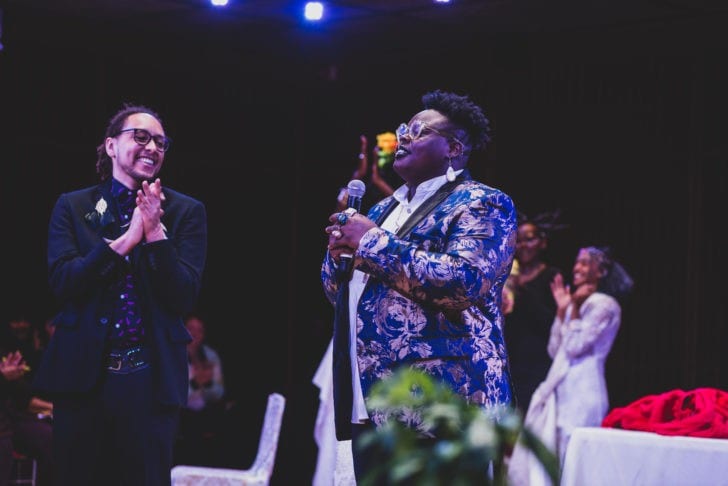
Nathalia JMag, one of the (2018) luminaries who falls into this “other” category, is someone very much like the audience the museum is trying to invite in with this work.
“Before being asked to become a luminary I actually had done an event with the museum where I showcased some of my designs and taught a workshop on natural dyeing,” she explains by email. “But prior to working with them I actually had never been to the museum.” The experience has had a really transformative effect on her. “Being a Luminary truly changed my career for the better, before being a Luminary I didn’t realize I could work with museums and local organizations to put on events and to showcase my work. … I have learned so much about myself and the city working at the museum. It has added a rich layer to my practice and has helped me expand, it also has exposed my brand to people who may not have been exposed to it before.” JMag is also one of the artists that brought a bit of the museum out beyond its walls, combining her ongoing work as a luminary with her residency at Urbano Project in 2019.
“I appreciate that we were welcomed to interrogate and imagine and share our practices with visitors in ways that responded to our authentic selves,” says visual artist and civic designer Sabrina Dorsainvil (2018). “We also come with our own worlds and audiences and for those folks to start to imagine and see the museum as a space for them has definitely been an outcome.”
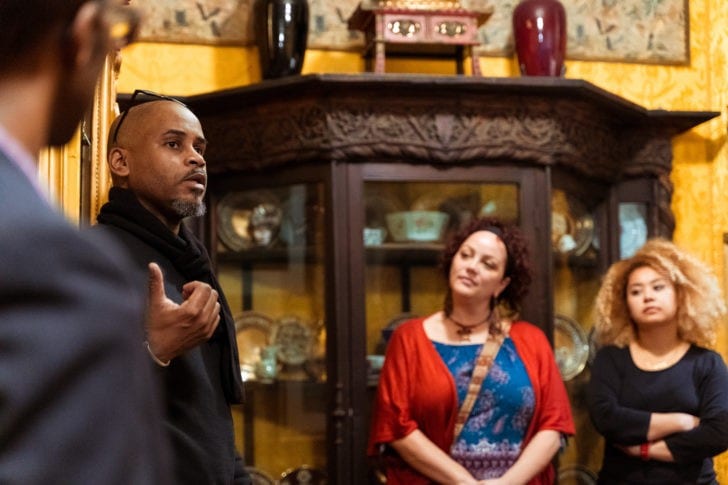
This is the point for Vedro. “It’s an important way for us to be a real creative home to artists in the city, and to give back into the local ecosystem and also to learn from and with local artists,” she explains. “Everybody that comes to participate in the Neighborhood Salon brings along all of their networks and all of their lived experiences, and what they value, and the places that they frequent in the city, and all of the things that have built them up to be who they are and all of their disappointments or things that they’ve learned along the way.”
As the fourth cohort of Neighborhood Salon Luminaries settles in, and the previous three continue to inform, claims Vedro, “not only the community engagement programs, but now, more and more, other types of programming, and collaborations throughout the museum,” the master plan seems to be for the outside world to change the way the museum’s immutable collection is seen since the collection itself can’t be changed.
Or, to put it another way, perhaps the Gardner is now collecting perspectives as a variety of artwork.
On Jan 20, 2020, Neighborhood Salon Luminary (2018-19 cohort) and Boston Poet Laureate Porsha Olayiwola will perform a new work reflecting on the life of Dr. Martin Luther King Jr. for the museum’s Dr. Martin Luther King Jr. Day of Service.
Heather Kapplow is a Boston-based conceptual artist and writer.
